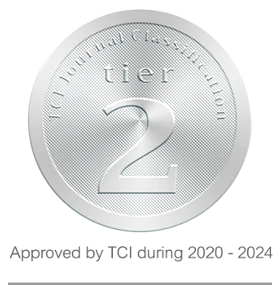THE ROLE OF COMMUNITY RADIO TOWARDS DHAMMA PROPAGATION ACCORDING TO THERAVADA BUDDHIST PHILOSOPHY
Keywords:
Community radio, Propagation, Theravada Buddhist PhilosophyAbstract
The objectives of this thesis are as follows: 1) to study the role of community radio, 2) to study Dhamma propagation according to Theravada Buddhist philosophy, and 3) to analyze the role of community radio towards Dhamma propagation according to Theravada Buddhist philosophy. The results of the study were found that:
The roles of community radio are: 1) To publicize information, 2) To share and exchange learning, 3) To reflect problems, 4) To build unity, love and stability in the nation, 5) To help conserve arts, cultures, local wisdom and community recollection, 6) To help develop the nation, 7) To propagate religions, 8) To propagate education, and 9) To provide recreation. The Dhamma principles for propagation guidelines are: 1) qualities of a preacher, and 2) manners of teaching; elucidation and verification, inspiration towards the goal, filling with enthusiasm, and filling with delight and joy. The Dhamma principles suitable for propagation are: 1) The Threefold Training, 2) The Four Noble Truths, and 3. 5 principles of a Gradual Instruction. The roles of community radio towards Dhamma propagation are: 1) The role in propagation, 2) The role in providing information, 3) The role in propagating information to the target group, 4) The role in sorting qualifications of program runners in Dhamma propagation, and 5) The Dhamma principles used in propagation.
References
กุลกนิษฐ์ ทองเงา. (2556). ลักษณะของวิทยุกระจายเสียง. กรุงเทพฯ: ทริปเพิ้ล เอ็ดดูเคชั่น.
แก้ว ชิดตะขบ. (2553). ประวัติความสำคัญของการเผยแผ่พระพุทธศาสนา. กรุงเทพฯ: โรงพิมพ์สำนักงานพระพุทธศาสนาแห่งชาติ.
คูณ โทขัน. (2545). พุทธศาสนากับสังคมและวัฒนธรรมไทย. กรุงเทพฯ: สํานักพิมพ์โอนเดียนสโตร์.
คณาจารย์ มหาวิทยาลัยมหาจุฬาลงกรณราชวิทยาลัย. (2559). พุทธวิธีการสอน. (พิมพ์ครั้งที่ 2). พระนครศรีอยุธยา: สำนักพิมพ์มหาวิทยาลัยมหาจุฬาลงกรณราชวิทยาลัย.
คณะวารสารศาสตร์และสื่อสารมวลชน. (2540). ทิศทางวิทยุ-โทรทัศน์กับรัฐธรรมนูญ 2540. กรุงเทพฯ: โรงพิมพ์มหาวิทยาลัยธรรมสาสตร์.
นภาภรณ์ อัจฉริยะกุลและอมรมาศ คงธรรม. (2545). ความหมายและความสำคัญของวิทยุกระจายเสียงและวิทยุโทรทัศน์ ในเอกสารการสอนชุดวิชาความรู้เบื้องต้นเกี่ยวกับวิทยุและโทรทัศน์, หน่วยที่ 1. นนทบุรี : สำนักพิมพ์มหาวิทยาลัยสุโขทัยธรรมาธิราช.
จีรวรรณ โสภัณ. (2562). ศึกษาวิเคราะห์หลักการเผยแผ่พระพุทธศาสนาของพระโสภณวิสุทธิคุณ (บุญเพ็ง กปฺปโก). วิทยานิพนธ์ศาสนศาสตรมหาบัณฑิต, บัณฑิตวิทยาลัย มหาวิทยาลัยมหามกุฏราชวิทยาลัย.
พระณปวร โทวาท. (2560). ต้นแบบการบริหารจัดการเพื่อการเผยแผ่พระพุทธศาสนาของศูนย์เผยแผ่พระพุทธศาสนาประจำจังหวัดในประเทศไทย. ดุษฎีนิพนธ์ปรัชญาดุษฎีบัณฑิต, บัณฑิตวิทยาลัย: มหาวิทยาลัยสยาม.
พระมหาทองศรี เอกวํโส ดร. และคณะ. (2552). การสำรวจความคดิเห็นของประชาชนเกี่ยวกบัการฟังวิทยุชุมชนในการเผยแผ่พระพุทธศาสนา : กรณีศึกษา สถานีวิทยุวัดสามพรานวัดนายโรงและวัดชลประทานรังสฤษฎ์. คณะมนุษยศาสตร์ มหาวิทยาลัยมหาจุฬาลงกรณราชวิทยาลัย.
ราชกิจจานุเบกษา เล่มที่ 114/ตอนที่ 55 ก/หน้า 9/11 ตุลาคม 2540.
กาญจนา แก้วเทพ.?คู่มือวิทยุชุมชน (FNS)?. สืบค้นเมื่อ 8 สิงหาคม 2562 จาก<http://www.thaibja.org/?p=1956>.
กระจอกข่าว.?การใช้สื่อเพื่อประชาสัมพันธ์ รวมพลคนพีอาร์ จุดนัดพบคนทำงานด้านการประชาสัมพันธ์ของหน่วยงานสังกัดกระทรวงสาธารณสุข?. 11 มิถุนายน 2551, สืบค้นเมื่อ 4 สิงหาคม 2562 จาก http://oknation.nationtv.tv/blog/khonpr/2008/07/27/entry-1.
ครูบ้านนอกดอทคอม. ?อริยสัจ 4?. 19 กันยายน 2551, สืบค้นเมื่อ 28 สิงหาคม 2562 จาก .



